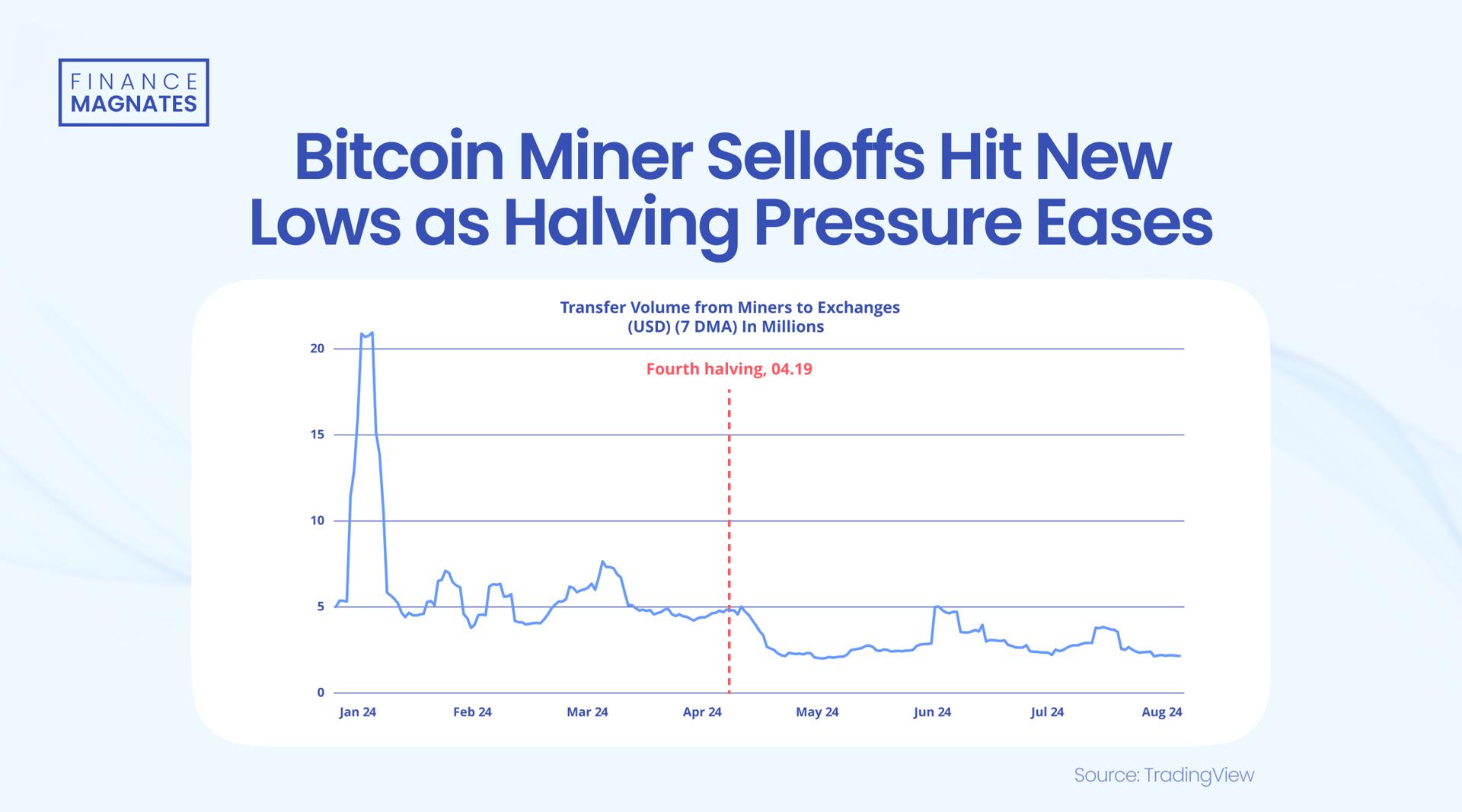Revenue for publicly traded Bitcoin (BTC) and other cryptocurrency miners on Wall Street has fallen by 12%. This continues the negative reaction to April's halving, which reduced block rewards, coupled with low network fees and rising production costs. According to the latest JPMorgan report, this is making it difficult for miners to maintain profitability.
Bitcoin Miners Earning Less, Reports Show
A few months ago, the fourth Bitcoin halving event took place, reducing the rewards received by miners from 6.25 BTC to 3.125 BTC. As a result, miners get half as much revenue for their work, and the competition for mining new BTC has significantly intensified.
“The 4th Bitcoin halving event cut the number of daily coins mined (and all else equal, the daily revenue opportunity) in half, resulting in lower margins and profitability across our coverage universe,” commented Reginald Smith and Charles Pearce in the JPMorgan report.
The study's authors also point out significantly higher energy costs, which negatively impact the realized profitability of individual publicly traded miners. For Marathon Digital (MARA), the largest Bitcoin miner on Wall Street, these costs have already doubled in 2024 compared to 2023. The situation is similar for other publicly traded miners.
An example is BitFufu, whose mining costs jumped by 168% over the year, resulting in a significant 75% cut in net profit. On average, producing one Bitcoin cost the company $33,000.
Larger players are dealing with this problem by acquiring smaller ones, leading to significant industry consolidation. We've seen at least a few examples of such moves in recent months. One of them was CleanSpark, which decided to acquire a Bitcoin mining site in Wyoming.
“Cash-rich miners like Riot Platforms and Cleanspark acquired other miners with turn-key facilities to increase near-term hashrate and increase their power pipeline,” JPMorgan added.
Miners' Earnings Down 12%
In a separate report prepared by VanEck, we read that BTC miners' total daily revenue fell by 12% month over month to $27.4 million. Comparing this result with last year's figures, it's an almost 60% decrease.
Surprisingly, VanEck is generally positive and suggests not paying too much attention to these values.
“While Bitcoin mining revenues have faced challenges due to post-halving block reward reductions and low network fees, many publicly traded Bitcoin miners are outperforming this year by capitalizing on opportunities in AI and high-performance cloud computing,” VanEck explains in its latest report.
Many publicly traded miners seek their chances in the AI and HPC sectors, which can provide higher margins per megawatt than traditional cryptocurrency mining.
“AI companies need energy, and bitcoin miners have it,” VanEck's head of digital assets research, Matthew Sigel, commented. “As the market values the growing AI/HPC data center market, access to power—especially in the near term—is commanding a premium.”
Bitcoin Miners are Shifting to AI & HPC, Unlocking New Revenue Through Strategic Arbitrage
— matthew sigel, recovering CFA (@matthew_sigel) August 16, 2024
We Estimate a $38B Net Present Value Opportunity by Converting 20% of their Collective Capacity by 2027.
(For context, the combined market cap of the stocks we looked at is $19B.)
🧵 pic.twitter.com/hudE7PbXH2
Examples of such moves have been evident since last year. For instance, HIVE Blockchain rebranded to HIVE Digital to better reflect the evolving nature of its business.

VanEck also notes that the pace of BTC sell-offs by miners is slowing, and transfer volumes from their treasuries to exchanges have fallen by 21% over the month. This is said to signal “stabilization from miners after their post-halving selling increased significantly in June and July.”






















